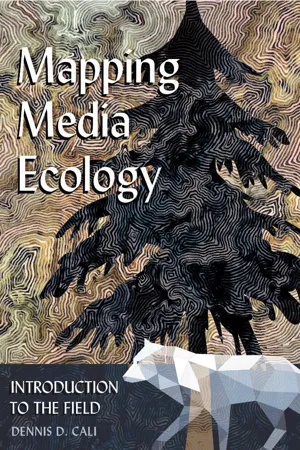
- 282 pages
- English
- PDF
- Available on iOS & Android
About this book
Until now, the academic foundations of media ecology have been passed down primarily in the form of edited volumes, often by students of Neil Postman, or are limited to a focus on Marshall McLuhan and/or Postman or some other individual important to the field. Those volumes are invaluable in pointing to key ideas in the field; they provide an important and informed account of the fundamentals of media ecology as set forth at the field's inception. Yet there is more to the story.
Offering an accessible introduction, and written from the perspective of a «second generation» scholar, this single-authored work provides a unified, systematic framework for the study of media ecology. It identifies the key themes, processes, and figures in media ecology that have coalesced over the last few decades and presents an elegant schema with which to engage future exploration of the role of media in shaping culture and consciousness.
Dennis D. Cali offers a survey of a field as consequential as it is fascinating. Designed to be used primarily in media and communication courses, the book's goal is to hone insight into the role of media in society and to extend the understanding of the themes, processes, and interactions of media ecology to an ever-broader intellectual community.
Frequently asked questions
- Essential is ideal for learners and professionals who enjoy exploring a wide range of subjects. Access the Essential Library with 800,000+ trusted titles and best-sellers across business, personal growth, and the humanities. Includes unlimited reading time and Standard Read Aloud voice.
- Complete: Perfect for advanced learners and researchers needing full, unrestricted access. Unlock 1.4M+ books across hundreds of subjects, including academic and specialized titles. The Complete Plan also includes advanced features like Premium Read Aloud and Research Assistant.
Please note we cannot support devices running on iOS 13 and Android 7 or earlier. Learn more about using the app.
Information
Table of contents
- Cover
- Contents
- Foreword
- Preface
- Section One: Foundational Questions
- Section Two: Canonical Figures
- Section Three: Orality-Literacy Studies
- Section Four: Technology Studies
- Section Five: Culture Studies
- Section Six: Bias Studies
- Section Seven: Language Studies
- Section Eight:“Doing” Media Ecology
- Index